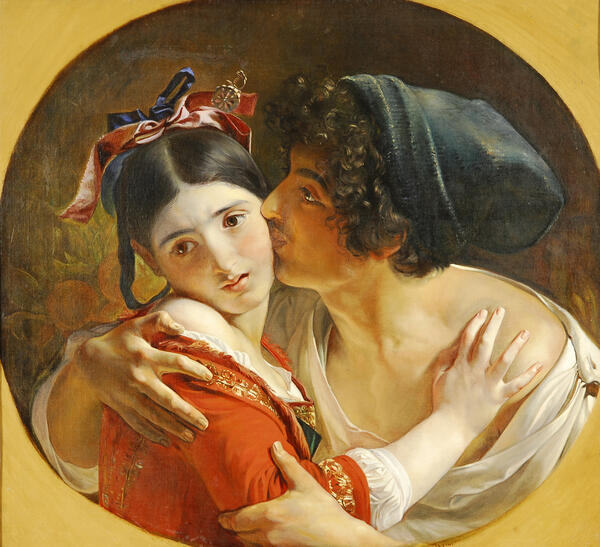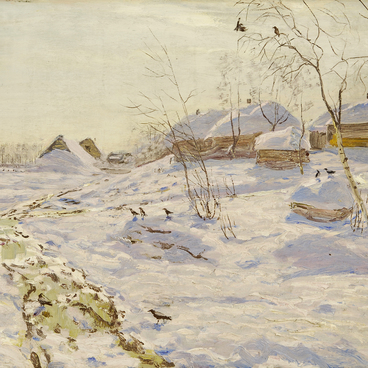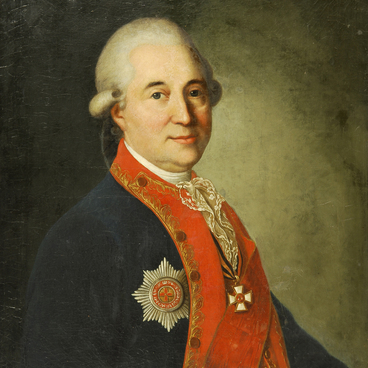Feodor Moller painted the painting, ‘A kiss, ” in 1840. He portrayed a kissing scene: a young man holds the girl by her shoulders and pulls her toward him, kissing her on the cheek. The girl turns her head to the side and presses her hand on his naked shoulder. The artist intentionally magnified the figures in order to focus on the emotions of the characters. The feelings of excitement, passion and fear are all the elements that fall under the criteria of romanticism. Romanticists were attracted to strong passion and natural elements, and all that is unusual and unknown. In romantic paintings, artists tried to reveal the features of each character and tried to capture the emotions of the models.
This composition is based on academic art — by the end of the 18th century it was mandatory for students in classic academic art programs to paint images of ‘the bride and the groom, ” or “themes about two people.” Feodor Moller’s works belong in academic art as well, however he chose Italian commoners as protagonists in his art.
Feodor Moller lived from 1812 to 1874. The son of a high ranking naval sailor, he was preparing for the start of his naval military career. By 1826 he was already an officer. His increasing interest in painting led him to study at the Academy of Arts. There he was one of the favorite students of Karl Bryullov — the artist that painted the painting, ‘The last day of Pompeii.’
In 1838 after his studies at the Academy, Feodor Moller decided of his own accord to move to Italy. He wanted to familiarize himself with the works of old prestigious artists and improve his skills. In Italy, the artist enthusiastically began to paint genre paintings calling them ‘from the lives of the people, ” in his attempt to imitate his teacher Bryullov. Among them was the painting “A kiss.” Amalia Lavagnini, whom he met in Rome became his lover, and modelled for the painting.
His painting, ‘A kiss, ” marked the beginning of Feodor Moller’s high rise to fame. By 1840 he published the painting in St. Petersburg and received an academic award. The canvas was purchased by Emperor Nicholas I for his wife’s private quarters in the Winter palace. Throughout his life Feodor Moller had reproduced the same painting, and other artists also made copies of the same painting while he was still alive.
In Italy the artist’s life was dedicated entirely to art. Among his closest acquaintances were Feodor Bruni, Alexander Ivanov and especially Nikolai Gogol, with whom the artist became close friends and even painted several of his portraits. Alongside his academic works, the artist also created canvasses on biblical and historical themes. Later, the artist returned to Russia. The rapid inflammation in his lungs prevented him from finishing his last painting, “The Crucifixion of Christ”.




